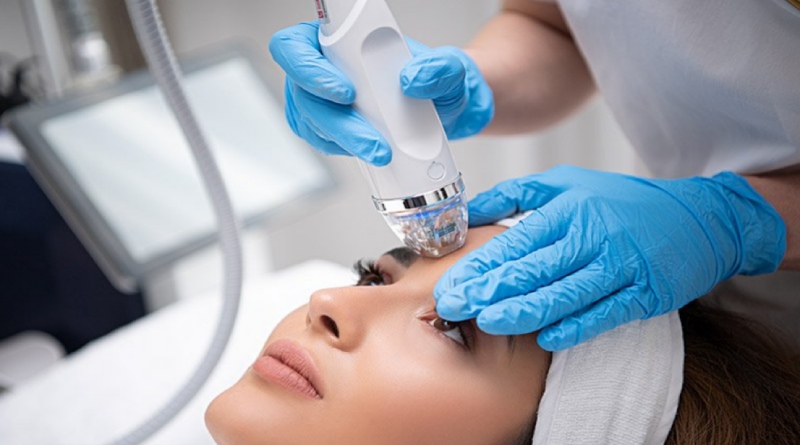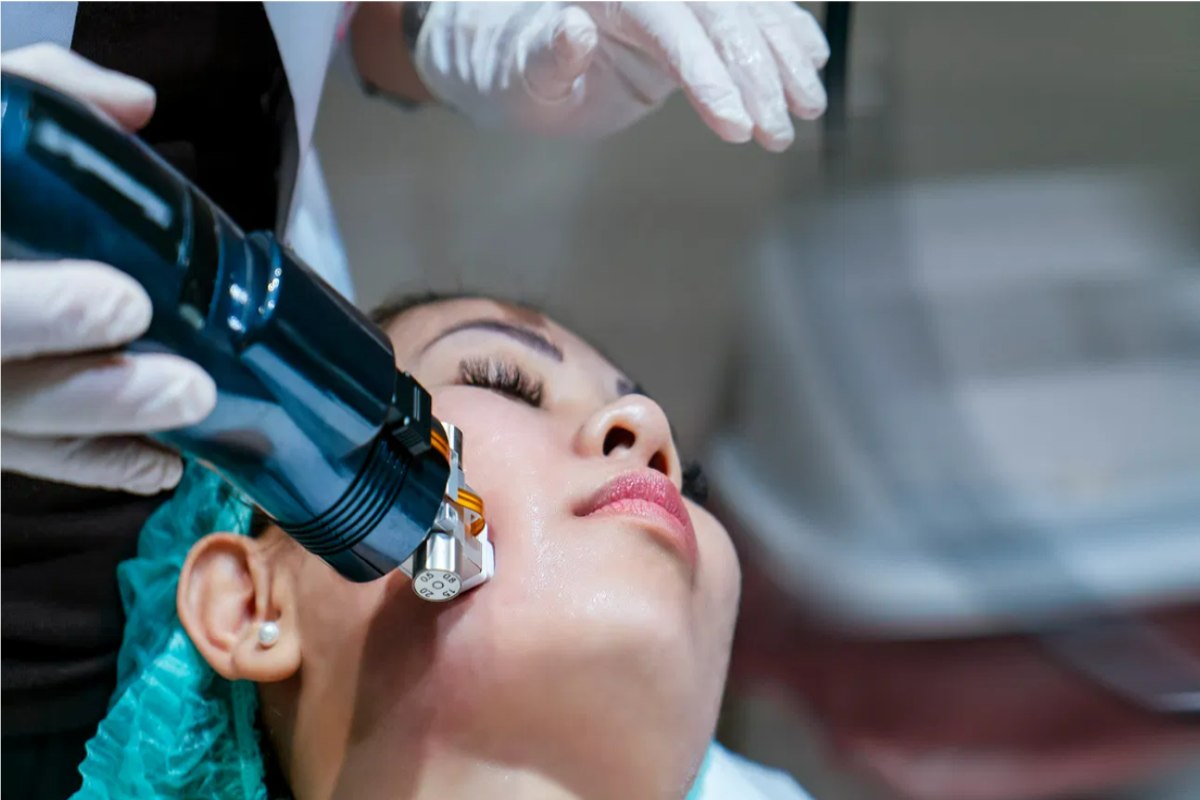Radiofrequency at the face is a classy treatment that uses a heat supply capable of stimulating the pores and skin to produce new collagen fibres, improving the first-rate and elasticity of the pores and skin, correcting expression traces and wrinkles, and improving the hydration and firmness of the face.
In addition, this remedy increases blood circulation and keeps the skin firm. Rejuvenated and oxygenated, being a safe, long-lasting and pain-free way to combat sagging of the face,
And should do a dermatologist, beautician, or physiotherapist specializing in radiofrequency.
Can do facial radiofrequency around the eyes and mouth. Forehead, cheekbones, chin and jowls, regions where the skin inclines to become more flaccid, and wrinkles and expression lines appear.
Table of Contents
What Is It For
- Radiofrequency will indicate to combat the main signs of ageing on the face, such as:
- Flaccidity of the skin that gives an appearance of tiredness or can change the facial contour;
- Wrinkles and appearance lines around the eyes, forehead and nasolabial folds;
Scar Caused By Acne;
Double Chin Double Chin Feel.
In addition to radiofrequency on the face, this aesthetic treatment can also perform on other body parts to combat cellulite and localized fat present in the belly or breeches, for example. See other radio frequency indications.
Who Can Do
Radiofrequency will indicat for all skin types in healthy adults, with intact skin, without wounds or infections, who want to eliminate from the first expression lines that appear around 30 years of age to the deepest wrinkles that do not disappear when the skin stretches, about 40 years of age.
In addition, radiofrequency can will recommend for people with acne scars, as it helps to reduce the appearance of these scars and improve the appearance of the skin. treatment should not do
People with a double chin can also do this procedure, as it favours the production of collagen at the site, which increases the firmness of the skin of the face.
How To Prepare

- Avoid alcoholic beverages at least the two days before the session;
- Prepare the skin with facial moisturizers for 4 to 6 weeks before the session;
- Do not use makeup, lotions or moisturizing creams on the day of treatment;
- Do not shave or wax any part of the face on the day of the session;
- Inform the doctor, beautician or physical therapist if there is a history of cold sores.
- Also, peeling or should avoid laser treatment on the face at least two weeks before the radiofrequency session.
How will do
Radiofrequency on the face will perform by a dermatologist, beautician or physical therapist specializing in this type of treatment and does not cause pain; no anaesthesia will require.
The radiofrequency equipment emits electromagnetic waves that pass through the skin and reach the fat layer between the skin and the muscle, increasing the local temperature.
Waves make the existing collagen fibres contract, giving more firmness to the skin and stimulating the formation of new collagen fibres, keeping the face rejuvenated and wrinkle-free.
How Many Sessions will Recommend?
So usually, a minimum of 3 sessions will indicate, which should do with an interval of 15 to 30 days. From there, the therapist will be able to detect how the skin reacted and how many sessions should be necessary to eliminate the deepest wrinkles.
Risks Of Radiofrequency On The Face
The face is one of the body areas at the most significant risk of burns because the bone ends are closer; therefore, the equipment must glide over the skin quickly and with circular movements. In addition, the therapist must constantly check the skin temperature so that it does not exceed 41 degrees Celsius, as higher temperatures can leave burn marks.
If a minor accident occurs and the skin region burns, must treat the affected area with anti-burn ointments, and radiofrequency can only perform when the skin is intact.
Who Shouldn’t Do
Radiofrequency on the face should not use for people with clotting problems, diabetes, Cushing’s syndrome or who have taken isotretinoin for acne treatment in the last two months.
- This Treatment Should Also Not Carry Out In Some Cases, Such As:
- Presence of any change in sensitivity on the face, not differentiating cold from heat;
- Use of metallic prosthesis in the bones of the face or metallic filling in the teeth;
- Pregnancy;
- Use of anticoagulants or corticosteroids;
- Areas with tattoo on the front or permanent makeup;
- Use of pacemaker;
- Wound or infection on the face;
- Fever;
- Autoimmune diseases or illnesses that weaken the immune system.
Conclusion
So in these cases, there may be a risk of increasing fever, worsening the infection, burning or not having the expected result. In addition, should not do radiofrequency under the thyroid as it can alter its functioning.

